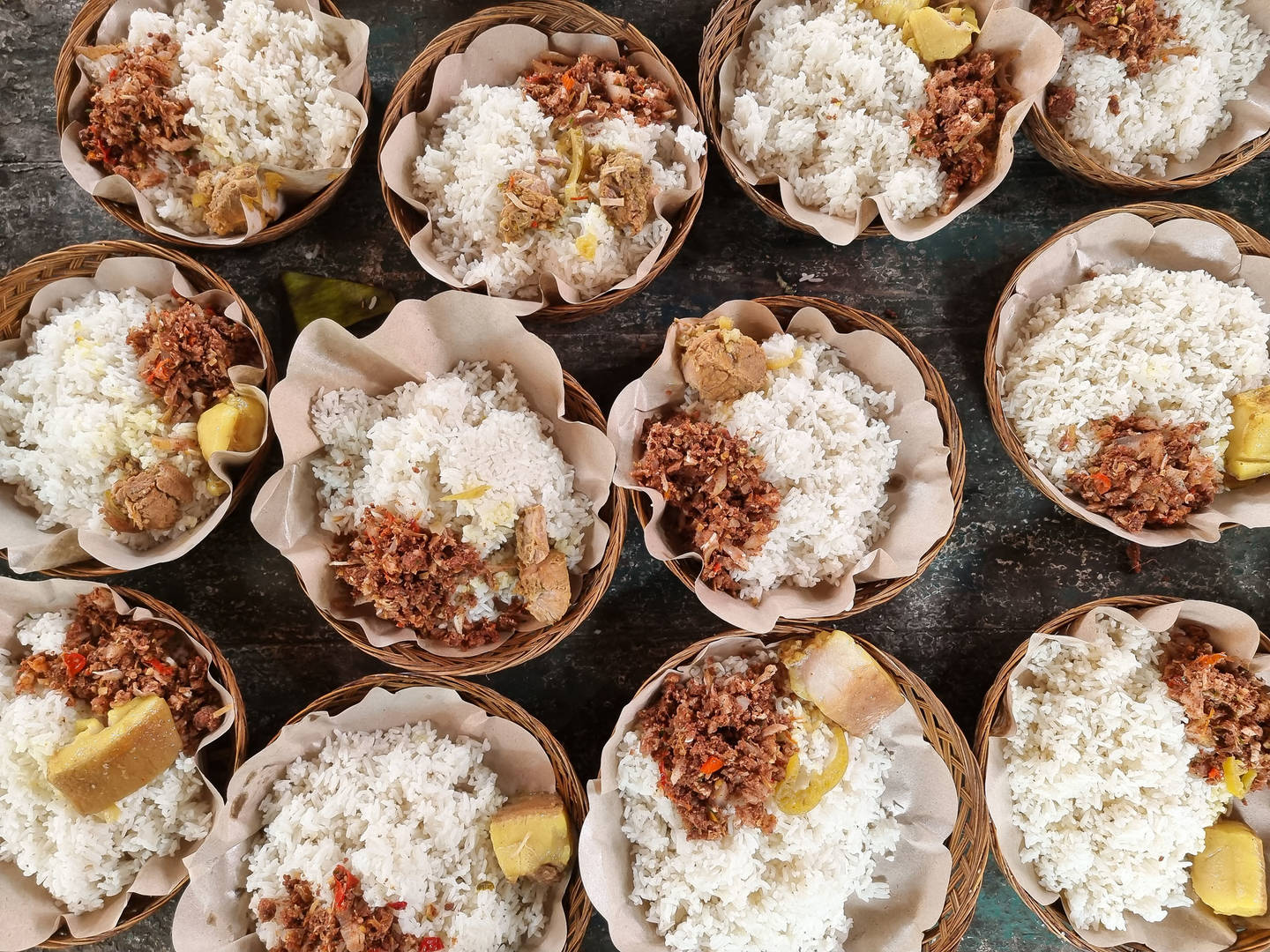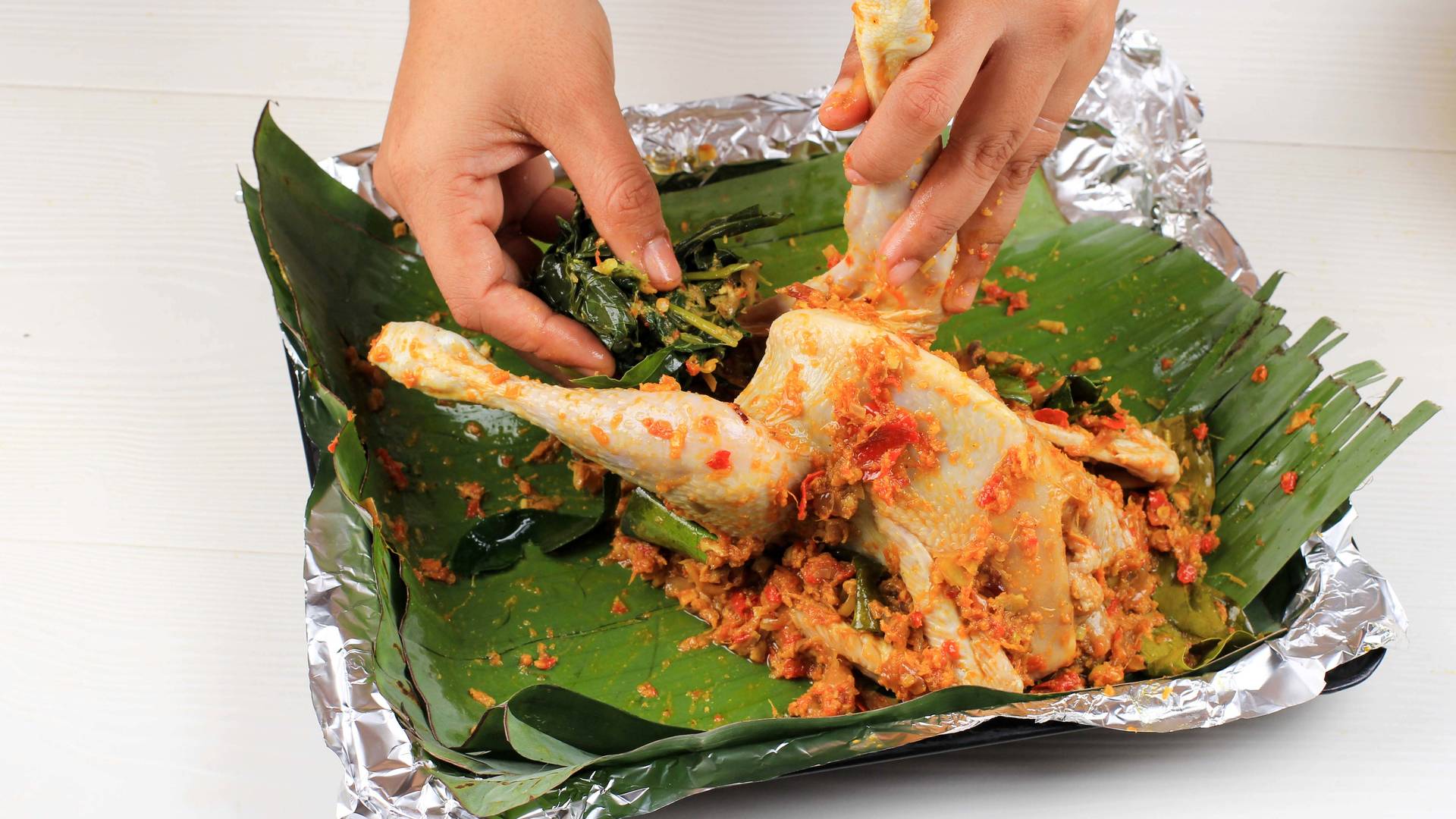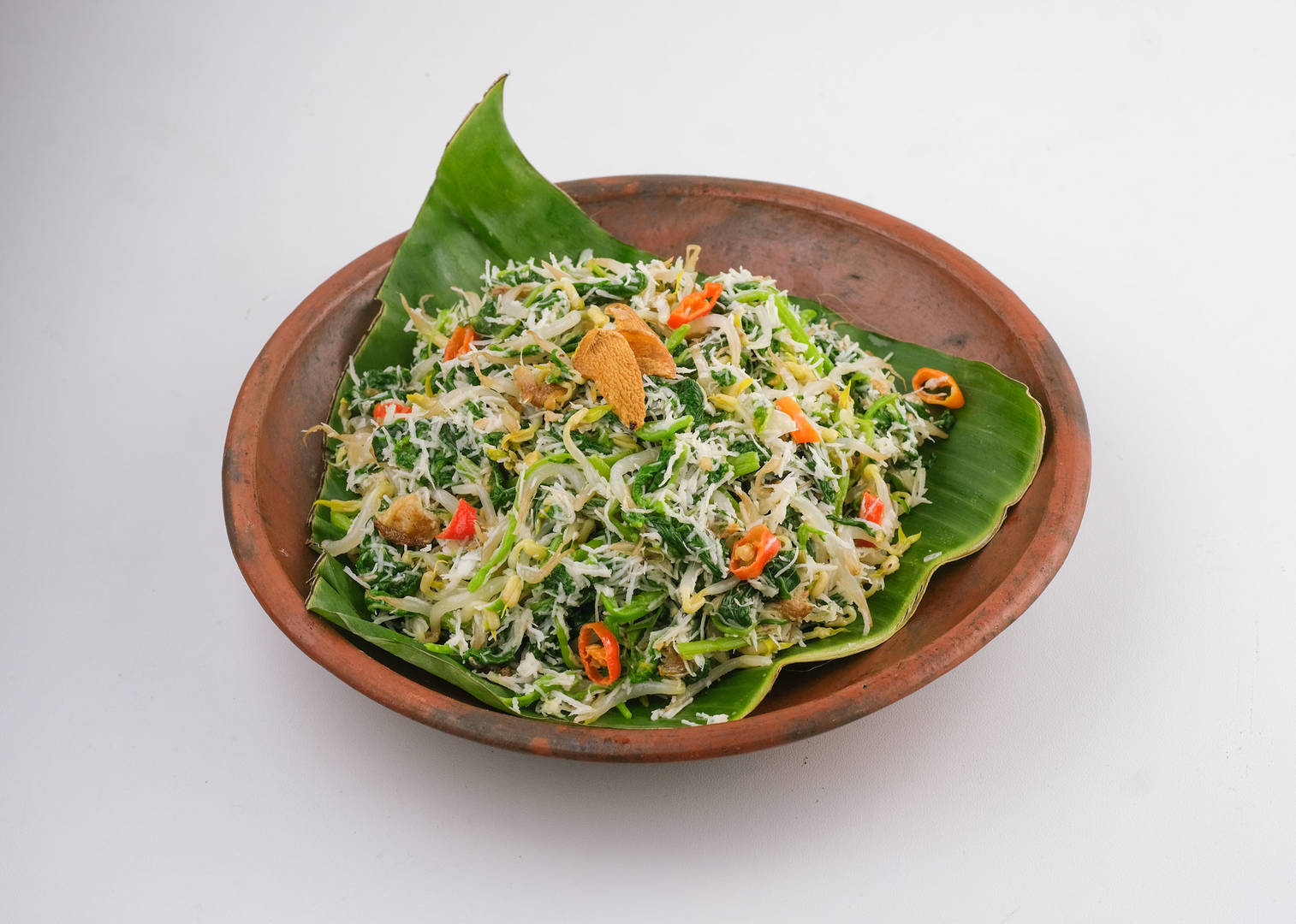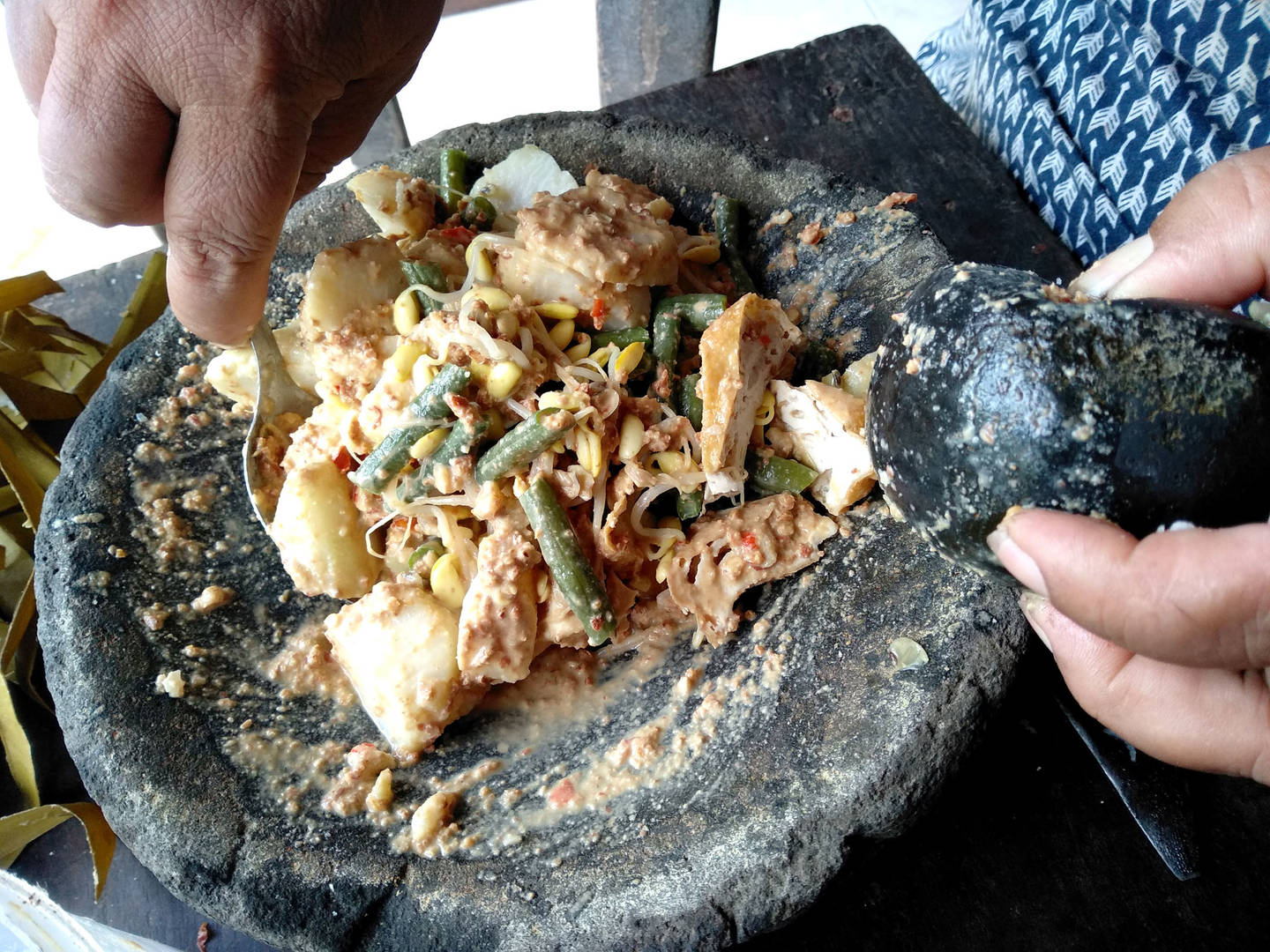A foodie's guide to Bali
Explore Bali in five dishes
Explore Bali in five dishes
Explore Bali in five dishes
Lawar represents the communal aspect of Balinese culture. This dish is traditionally prepared and consumed during ceremonies, festivals, and family gatherings. Commonly found at warungs, family-run small vendors, the combination of ingredients symbolises unity and harmony in the community.
Lawar is made from freshly grated coconut, minced meat including chicken and beef, and chopped vegetables such as green beans, cabbage, or jackfruit. It is then flavoured with animal
blood and spices: shallots, garlic, chilli, turmeric, kaffir lime leaves, and galangal (which is a root similar to ginger) and then served with rice.

Ayam Betutu highlights the importance of ceremonies and ritual offerings in Balinese Hindu culture. This dish showcases a whole chicken marinated in a rich blend of Balinese spices and slow-cooked until tender.
The chicken is marinated in a spice paste made from shallots, garlic, chillies, turmeric, ginger, galangal, candlenuts, and shrimp paste. It is then wrapped in banana leaves and slow-cooked, either by steaming or baking, allowing the flavours to fully penetrate and tenderise the meat. Once cooked, Ayam Betutu is usually served with rice and is a perfect centrepiece for festive gatherings and special occasions.

Sayur Urab emphasises the connection between Balinese people and their environment through the use of locally-sourced ingredients. This traditional vegetable salad demonstrates the island's abundant agricultural wealth and highlights the importance of a balanced, healthy diet in Balinese cuisine.
The dish is made from a variety of blanched vegetables, such as green beans, spinach, cabbage, and bean sprouts, tossed with freshly grated coconut and a fragrant spice paste made from shallots, garlic, chillies, kaffir lime leaves, and galangal.

Satay Lilit emphasises the creativity of Balinese culture. Unlike typical satay dishes that feature skewered, grilled meat, Satay Lilit is made from a mixture of ground meat or seafood (commonly fish, chicken, or beef) combined with grated coconut, coconut milk, and a blend of aromatic Balinese spices. The mixture is then wrapped around lemongrass stalks, bamboo sticks, or sugarcane and grilled over an open flame. The unique preparation method showcases the islanders’ ingenuity in developing new cultural forms, as seen in Balinese Hindu practices or gamelan music.

Tipat Cantok represents the resourcefulness and simplicity of Balinese cuisine. It is a traditional Balinese salad made from rice cakes (tipat) and a variety of vegetables, such as long beans, bean sprouts, and water spinach. The dish is often served with a spicy peanut sauce, which adds a rich, savoury flavour, or a simple sweet soy sauce. While it's commonly served in small Balinese warungs, you may have to search harder to find it in larger restaurants, or create it for yourself in a cooking class.

Learn the secrets of Bali’s delicious cuisine through our expert-led cooking classes at Jumeirah Bali.